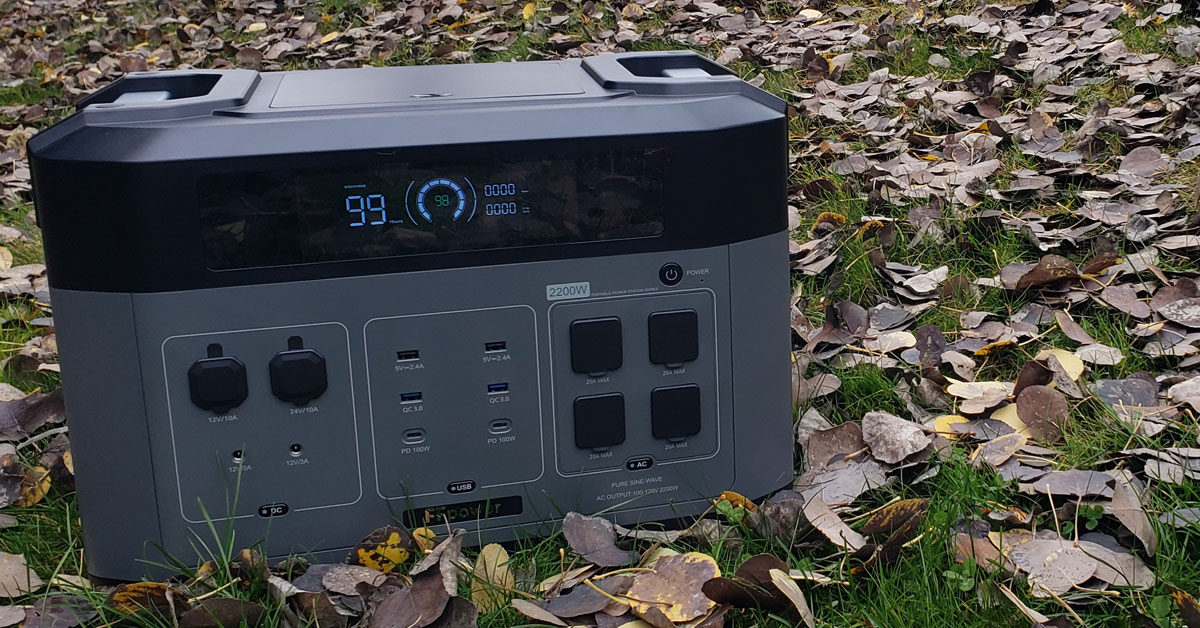REVIEW – In the world of backup power, there seems to be hundreds, if not, thousands of different power stations out there. One notable, brand new inclusion is the FFpower BP2000.
It’s a LiFePO4 power bank with a huge capacity, a plethora of outputs, and a whole lot going for it.
I was graciously sent a free sample in exchange for my honest feedback on it. I spent the last three weeks rigorously using it and seeing exactly what it’s capable of. Let’s start with the good things.
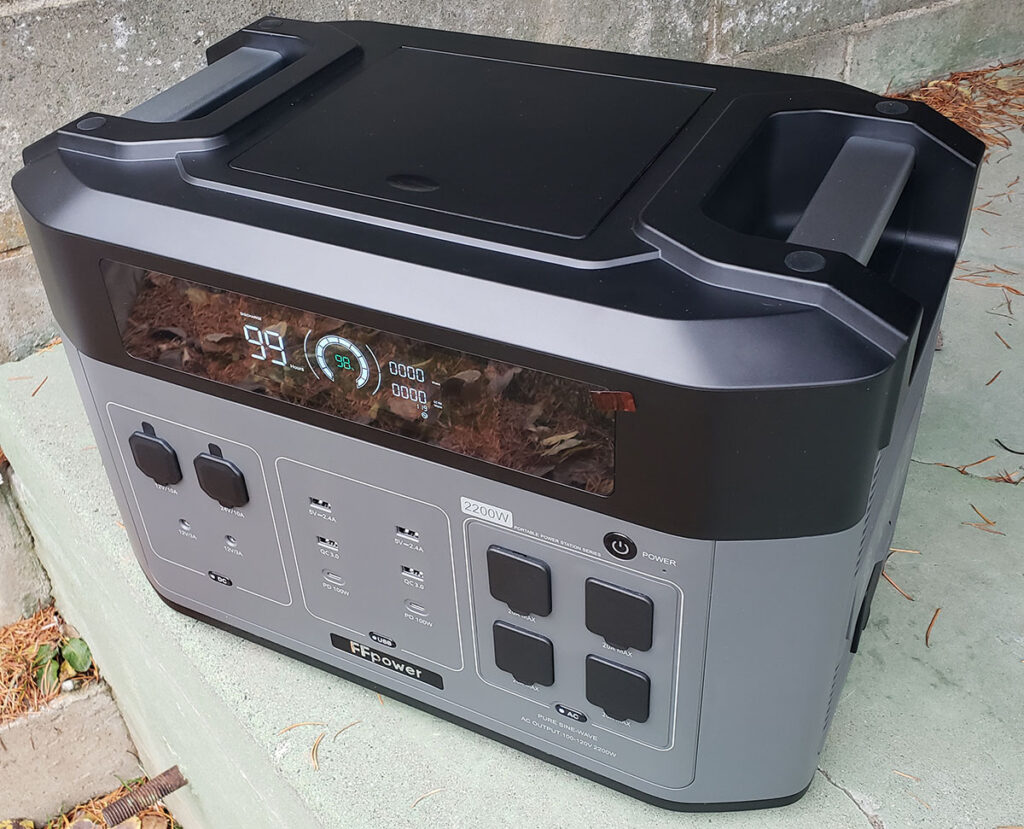
What I Love About It
- Huge capacity that’s expandable. With a single BP2000 power station unit, you get 2048Wh of energy storage. If you need more, you can add-on up to seven additional B2000 expansion batteries, each one offering an additional 2048Wh.
- Beautifully-lit LCD screen. On the front-center of the unit, there’s a 5-inch vivid screen that shows everything you’d need to know. It tells you the current input/output wattage and an estimated time remaining until the battery runs out. Any fault/errors are also shown here.
- Fast re-charging. When you plug it into a grounded wall outlet, it can re-charge ridiculously fast. We saw charge speeds of up to 1578 watts, which is phenomenal. A full re-charge only took 1 hour and 35 minutes. You can even set it to “slow” if your charging source isn’t ready for that kind of load.
- Super-strong handles. On the top of the unit, there’s two recessed handles that are made of aluminum. They feel solid, strong and very secure.
- Hidden compartment. On the top of the power station, there’s a small door that clicks-in and latches. It offers an ideal place to store all of the essential cables that you might need.
- Stackable design. The feet on the bottom are built in a way that they “nest” into additional B2000 expansion batteries without worry. You can stack up to four units together, without worrying about it wobbling or tipping over.
- Effective cooling fans. The internal fans only comes on when the unit is fast-charging or powering something high-demand. They’re relatively quiet and emit a whirring noise rather than anything loud or annoying. It draws air through one side and out the other.
- It utilizes LiFePO4 technology. Lithium-iron-phosphate is much preferred over standard lithium-ion or lead-acid technology. It’s suitable for over 3,000 charge/discharge cycles, which will last up to (and possibly beyond) a decade.
- Plenty of outputs. The front panel is well-equipped with basically everything you’d ever need for charging or powering most devices.
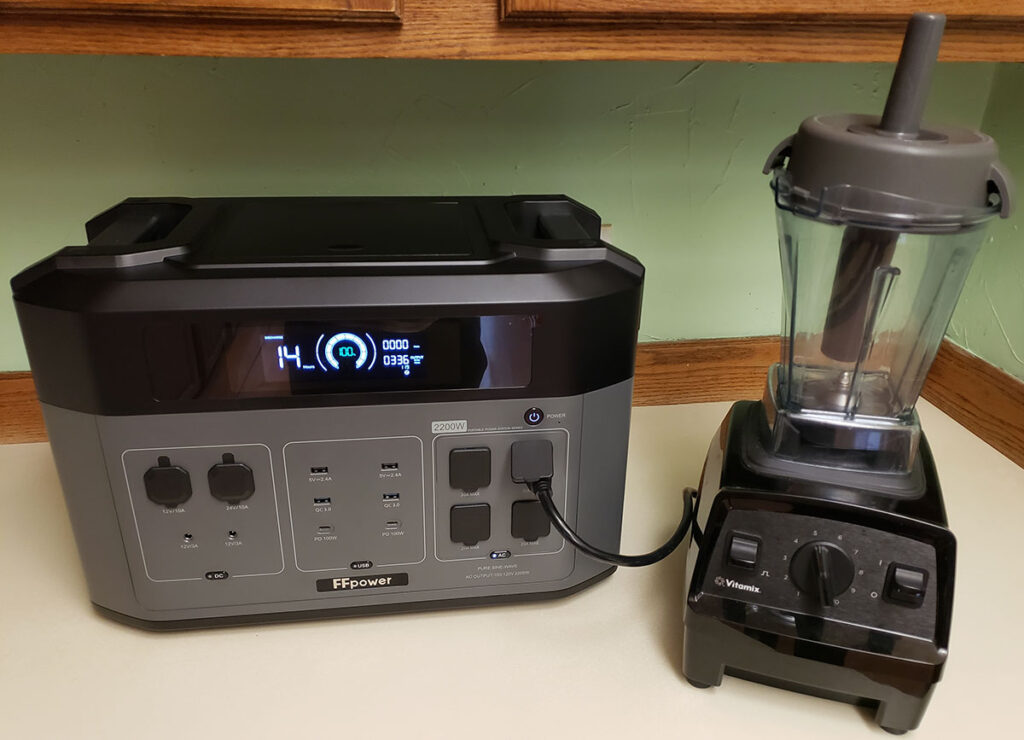
What I Don’t Love About It
- It’s very heavy. As with any power station with this kind of capacity, the sheer size and weight is a definite drawback. The main BP2000 unit tipped my scale at 52lbs. and each B2000 add-on battery weighs 41lbs.
- The DC ports on the B2000 expansion battery do not function if the unit is charging the main BP2000 power station.
- There’s a slight high-pitched hissing noise when the power station is turned on. It’s probably a transistor or capacitator and is only noticeable in quiet environments.
- There’s no mobile app or smart features. This isn’t that big of deal for most, but something I though would be worth pointing out.
- Not waterproof. Although there are rubber port cover flaps, it is not built to withstand water or excess moisture.
- It’s a bit expensive. There’s no other way to put this; it costs a mini fortune for some peoples’ budgets.
Using the FFpower BP2000
When I first unpacked the FFpower BP2000 power station, I immediately noticed how heavy it was. Luckily, the built-in handles offer a way to negate its massive size.
Tipping the scale at 52lbs, there’s no other way to put it; this thing is huge. And that’s OK. For the kind of capacity and output it has, it’s understandable.
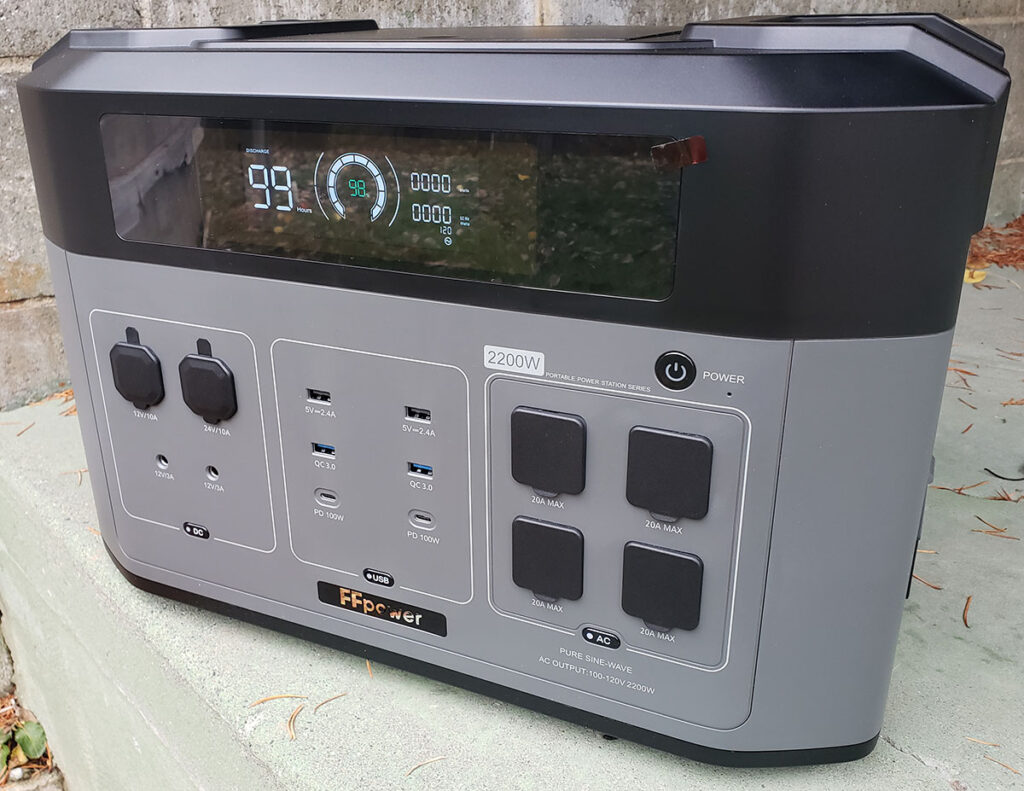
The B2000 expansion battery is the same, although 41lbs. Albeit heavy, it’s easy to pickup; the handles for this unit are recessed into the side, rather than the top.
All the necessary charging cables are stowed away in a handy little lid on the top that ‘clicks-in’ to place. There’s just enough room for the main AC power cord, XT60 to DC charging cable, and an MC4 solar panel cable. This is pretty handy; it ensures you won’t lose track of them.
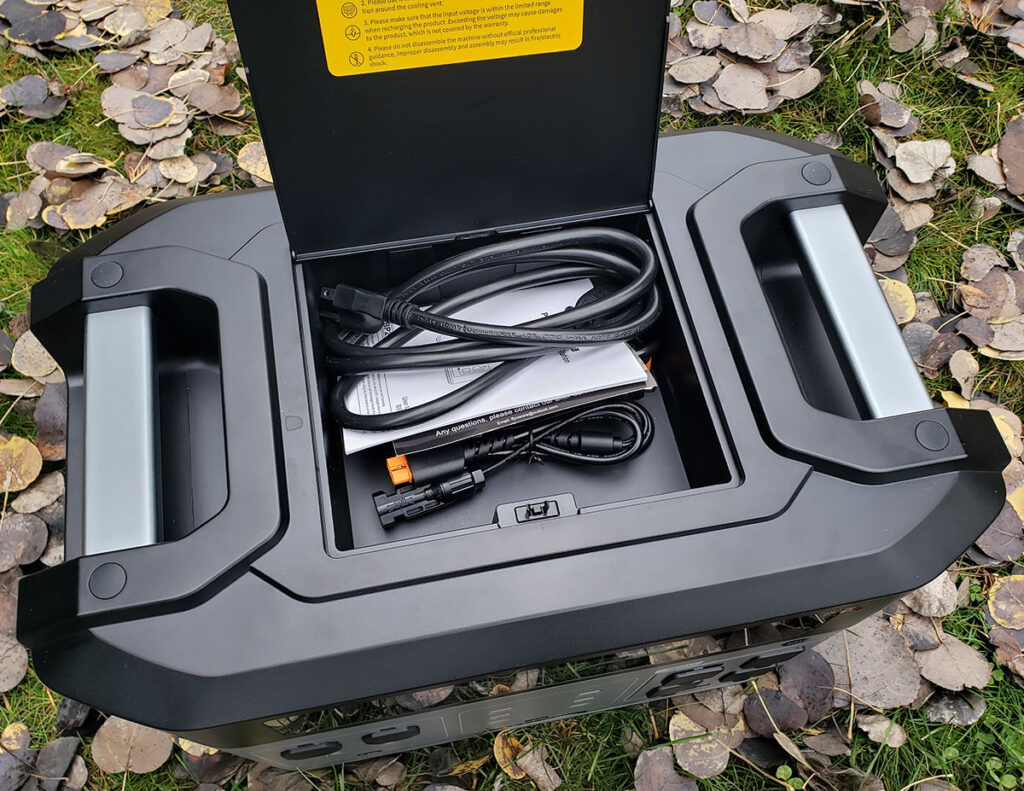
Ports
With the BP2000, there are numerous outputs for powering or charging virtually anything that draws less than 2200W of energy.
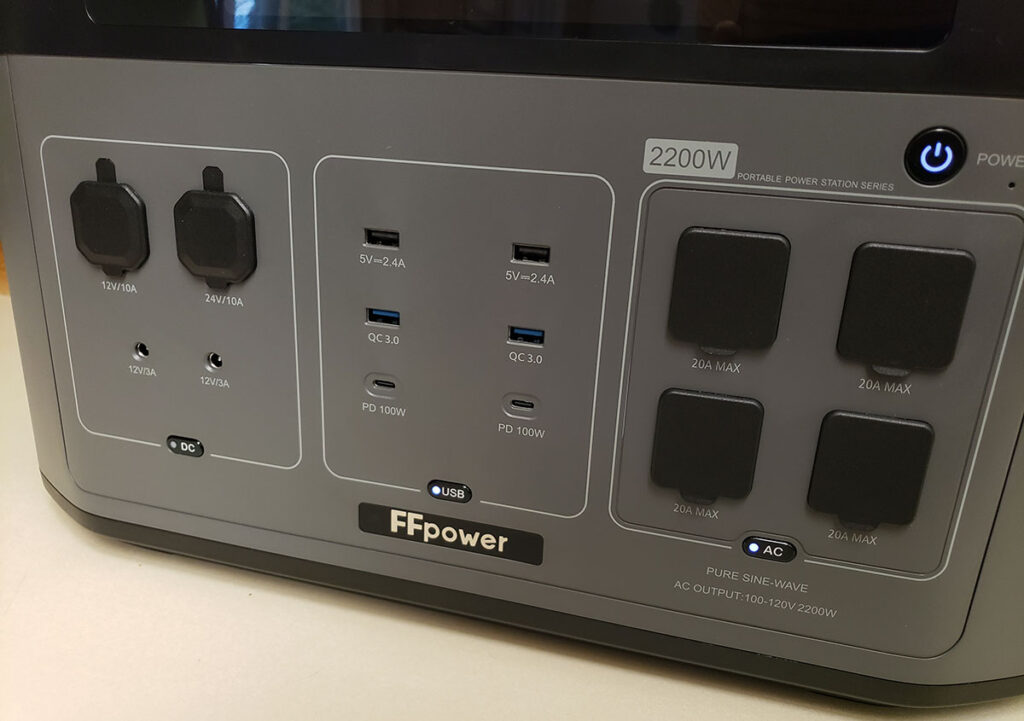
There’s four two standard USB-A (5V/2.4A) ports, two QC 3.0 USB-A ports, two USB-C 100W PowerDelivery ports. In addition, you have four grounded AC outputs (20A max), and four additional DC outputs (12V, 24V and two barrel-style 12V/3A).
On the left side, there’s a 30A AC output – perfect for electric car charging. Pretty sweet!
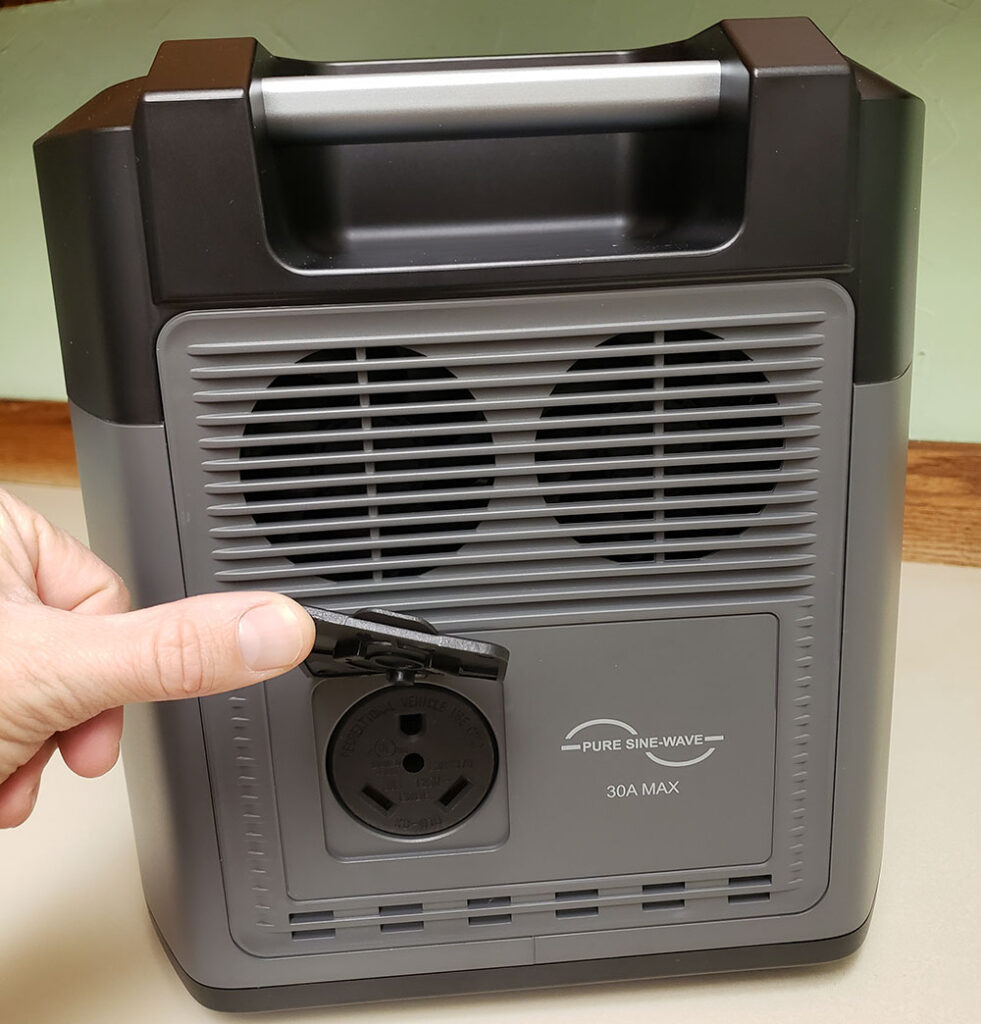
On the right side is where all the inputs are located. These ports are for re-charging the internal LiFePO4 cells. There’s the AC input, solar/car input, an overload protection, and a switch to toggle between slow and fast charge speeds. Oh, and beneath all this is the battery expansion port; used for connecting up to seven additional B2000 expansion batteries.
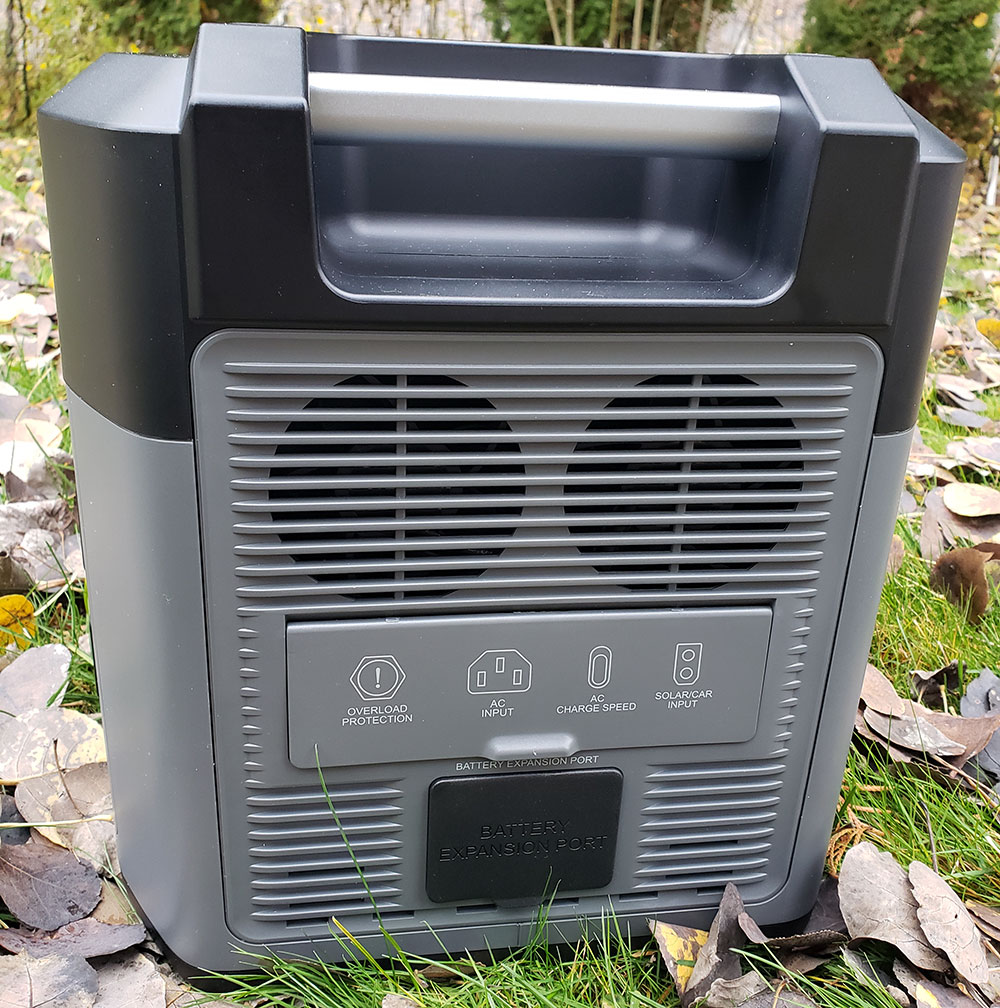
Testing it Out
At first, I connected my phone, tablet and a Kindle fire tablet to the USB ports to charge them up. Each section (AC/DC/USB) has its own tiny button with an LED to activate each group of ports. Press and hold each one for about a second to activate separate sections.
Everything worked great, as expected. The 100W PowerDelivery ports were a nice inclusion that I don’t typically see in most power stations; so bonus points for that!
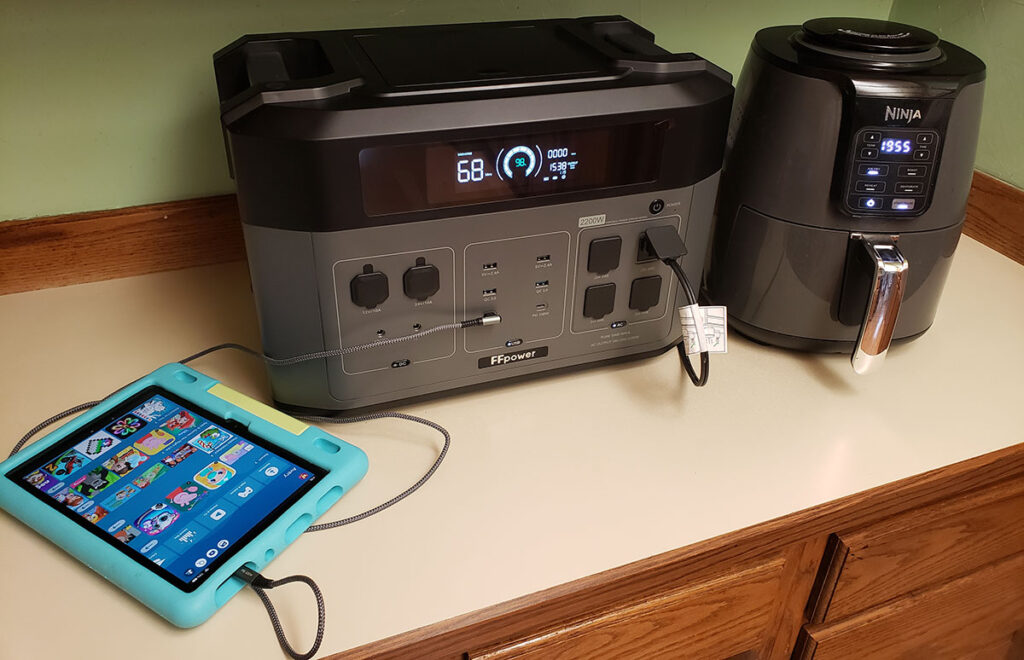
The pure sine wave AC inverter supports a draw of up to 2200W. To test this out, I ran an air fryer for several minutes. It peaked at around 1987W and ran steady for over 10 minutes. I also ran a Vitamix blender at max power for over 4 minutes.
During this time, to my surprise, the internal fans didn’t even kick-on, although I expected them to. No sweat!
Speaking of – the only time I noticed these fans kick-on was when it was charging from the wall outlet in “fast” mode. Which brings me to the next detail: recharging.
Recharging the unit was exceptionally fast when I plugged it into the wall. In just over 90 minutes the entire battery went from 0% to 100%.
Like any LiFePO4 battery, once you get above 80%, the charging slows and eventually crawls to completion during the last 10 minutes. But this was as expected – there’s no way around this.
Expansion Battery
Plugging in the B2000 expansion battery is easy to do with the included extra-fat cable. Just nestle the BP2000 on top of the battery and connect them with this cable.
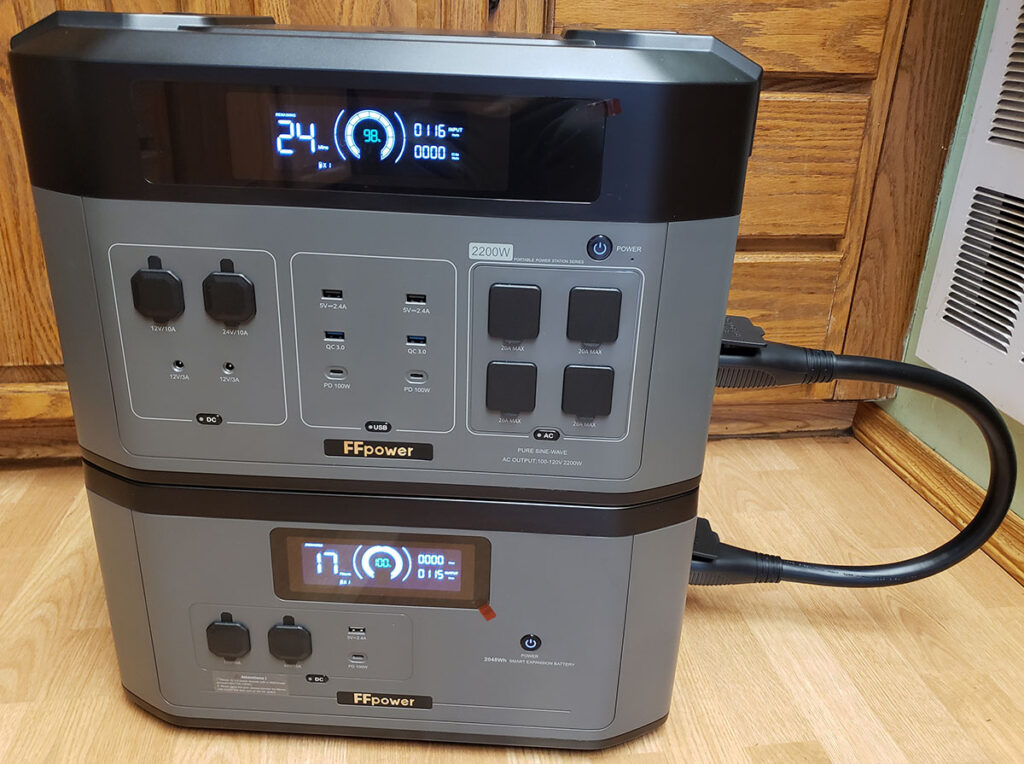
Immediately, the main BP2000 unit will automatically charge. During this time, I noticed that I was unable to use any of the DC outputs on the B2000. Once it completed topping off the main cells, the DC port was allowed to be turned on.
A bit odd, but something worth pointing out. It seems once it’s connected to the main power station, its main mission is to replenish any depleted energy.
Regardless, having the ability to expand capacity is wonderful. It’s not everyday that you see a power station with this capability. In fact, this seems to be more of a high-end feature.
While you might not have the budget for seven of these expansion batteries, it’s definitely nice to have that option!
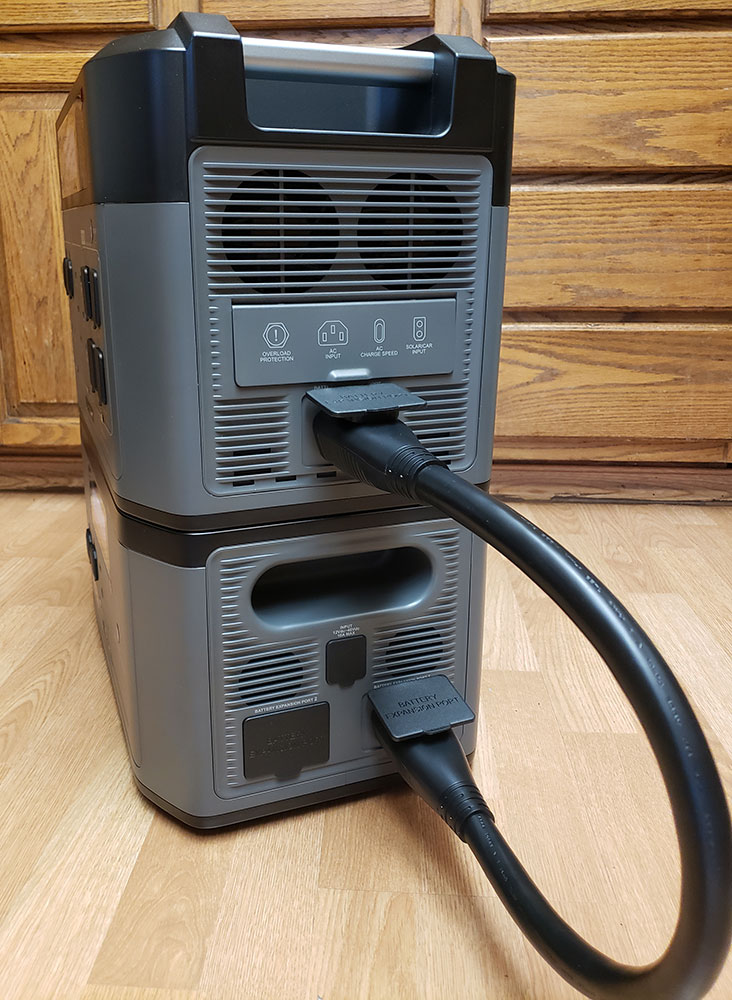
Final Thoughts
While testing the FFpower BP2000 and B2000 expansion battery for several weeks, I was pleased to find it work just about as well as I expected.
Sure, there are some minor quirks to be aware of (see above for a full list), there’s plenty to love and only a few notable drawbacks.
It’s built well, seemingly reliable, and offers plenty of connectivity to charge and/or power just about anything – every a 30A car charger!
While there’s no mobile app, I didn’t seem to miss it. Honestly, I’m kind of tired of trying to utilize half-baked apps that aren’t ready for general use. It seems FFpower decided to omit smart connectivity in exchange for other features that are more noteworthy; perfectly OK with me!
Meet Ry, “TechGuru,” a 36-year-old technology enthusiast with a deep passion for tech innovations. With extensive experience, he specializes in gaming hardware and software, and has expertise in gadgets, custom PCs, and audio.
Besides writing about tech and reviewing new products, he enjoys traveling, hiking, and photography. Committed to keeping up with the latest industry trends, he aims to guide readers in making informed tech decisions.

